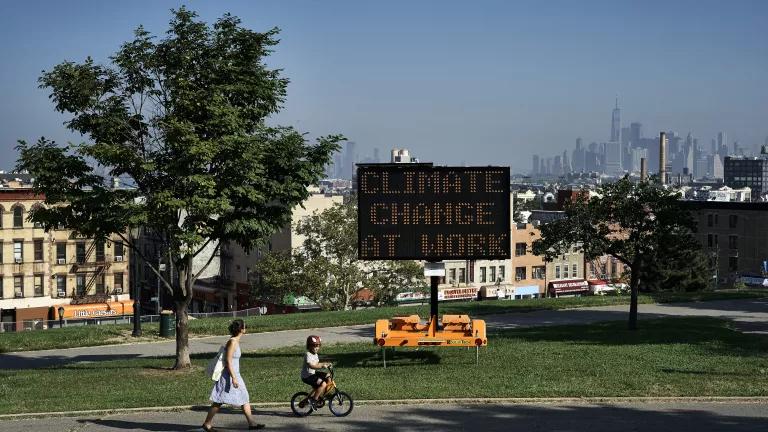
Sunset Park, Brooklyn
New Yorkers hustling by Manhattan’s Pier 84, through Brooklyn’s Sunset Park, or along Rockaway Beach in Queens might do a double-take after seeing flashing highway signs that warn, “Climate Change at Work” or “Vote Eco-logically” or “Climate Denial Kills.”
And that’s the point. To stop. To notice. To think about the globe’s largest looming environmental (and economic and public health) crisis.
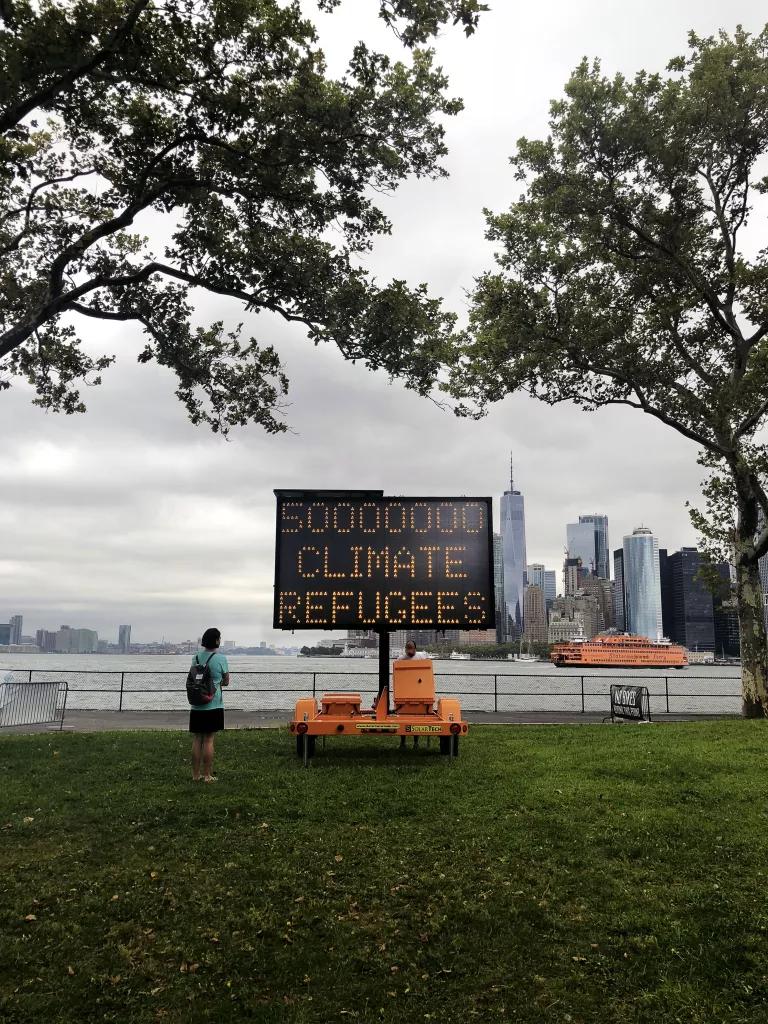
These tongue-in-cheek notices of impending disaster are just a few of the 10 solar-powered highway signs currently on display in the city’s five boroughs. They’re all part of a two-month-long public art installation by Justin Brice Guariglia, in partnership with the Climate Museum and the Mayor’s Office of Climate Policy & Programs.
Born in New Jersey, Guariglia is the first artist ever to tag along with NASA on earth science missions. He considers himself a transdisciplinary artist, regularly working alongside scientists, journalists, and philosophers to explore ecological crises. He spent two decades traveling and living in other corners of the globe, including Asia—where, in some countries, the effects of lax environmental policies, rapid modernization, and resource overuse are hard to ignore. Then Guariglia began focusing his work on the Anthropocene, the geological era defined by humanity’s impacts on the earth. His latest exhibit, “Climate Signals,” follows ecological and social themes similar to those featured in his previous projects, such as “Earth Works” and “After Nature.”
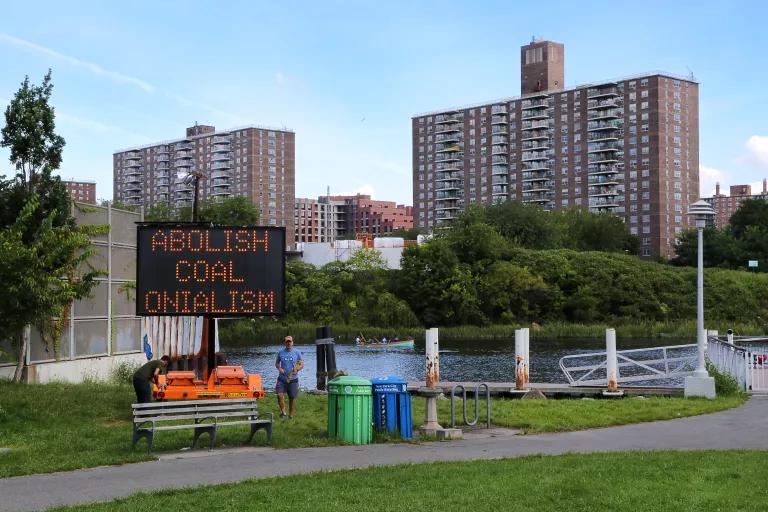
The artist, now based in the Big Apple, wants the exhibit to spark everyday conversations that “bridge that ontological gap between human beings and the natural world around us.” The traffic signs address what Guariglia sees as the greatest roadblock in our fight against climate change: talking about it. He argues that the scientific data, though alarming, don’t do much to put climate change front and center in the average person’s mind. For that, we need emotional resonance—and perhaps a little humor.
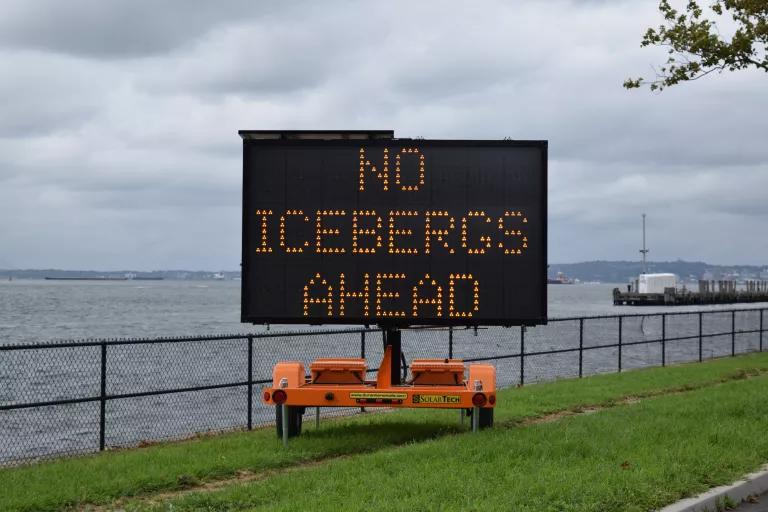
“This body of work was not made for the art world,” or even for the close-knit world of climate advocacy, Guariglia says. “This was really made for the public.” The real role of art, he argues, is to act as a social tool to gain “perspective, new languages, and new vocabularies, from which we can better access and understand the world around us.”
To open up the dialogue on climate change as broadly as possible, the Climate Museum, temporarily located on Governor’s Island, prioritized inclusivity across disciplinary as well as cultural and linguistic divides. Some signs alternate between English and the languages commonly spoken in the neighborhoods where they’re stationed. The museum also partnered with a wide range of organizations—including social justice advocacy groups, scientists, and other museums—to put on a series of events. On October 6 (aka “Ask a Scientist Day”), scientists posted up at the Climate Signals’ sites to answer visitors’ burning climate questions. On October 14, Puerto Rican artist Patricia Melodia Lewis will lead a group mural painting that tells a story of community resilience in the face of climate injustice.
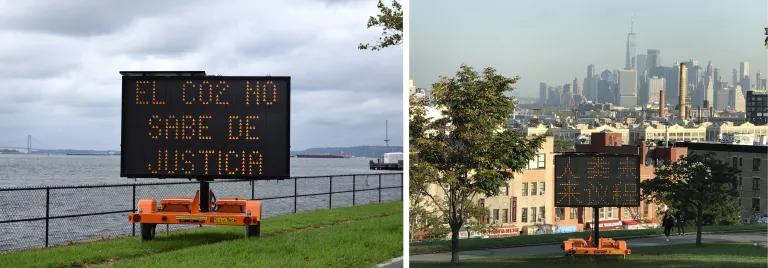
This is the second exhibit for the new Climate Museum, which includes an interactive exhibit to make your own climate sign and see it projected on a big screen. It also features a series of portraits of New York climate activists by photographer David Noles.
“It’s clear that we all need to pull together across tribes of different kinds,” says Miranda Massie, the Climate Museum’s founder and director. “Science alone is not enough. The arts alone are not enough. Outreach, government, and finance alone are not enough. We need all of these sectors innovating and working together in ways that will come to seem less and less radical.”
You never know what will spur one person to join the collective fight against carbon pollution and all that it brings. Perhaps, they’re just waiting for a sign.
Climate Signals, a city-wide exhibition, runs from September 1 through November 6, 2018.
This article was originally published on onEarth, which is no longer in publication. onEarth was founded in 1979 as the Amicus Journal, an independent magazine of thought and opinion on the environment. All opinions expressed are those of the authors and do not necessarily reflect the policies or positions of NRDC. This article is available for online republication by news media outlets or nonprofits under these conditions: The writer(s) must be credited with a byline; you must note prominently that the article was originally published by NRDC.org and link to the original; the article cannot be edited (beyond simple things such grammar); you can’t resell the article in any form or grant republishing rights to other outlets; you can’t republish our material wholesale or automatically—you need to select articles individually; you can’t republish the photos or graphics on our site without specific permission; you should drop us a note to let us know when you’ve used one of our articles.


Climate Change Takes Fashion Week by Storm (and by Drought and by Fire . . .)
What Is the Air Quality Index?
How to Make an Effective Public Comment